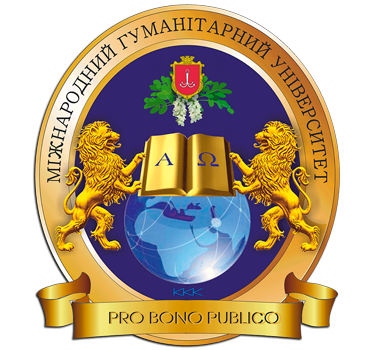OUR EXPERIENCE IN THE CORRECTION OF VENOUS THROMBOEMBOLISM IN BARIATRIC SURGERY UNDER THE CONTROL OF THROMBOELASTOGRAPHY
DOI:
https://doi.org/10.32782/2411-9164.20.1-8Keywords:
obesity, thrombosis, hemostasis, enoxiparin, pentoxifyllineAbstract
Introduction. In the world of obesity and its complications annually dies about 2.8 million people. Obesity is an independent factor of the risk of venous thromboembolism (VTE), as it interferes with the internal and external pathways of coagulation, as well as in anticoagulant mechanisms, which leads to a hypercoagulation state. Reducing excess body weight in patients with morbid obesity by bariatric surgery is becoming increasingly popular, as barium therapy is an effective means of treating obesity and related concomitant diseases. Advantages of bariatric surgery are undeniable, as well as risks. Despite many blood coagulation studies, cases of thromboembolism in such patients are becoming more frequent, especially during surgical interventions and in the postoperative period, given that the operation is a trigger factor in the development of thromboembolism. Materials and methods. A hemostasis system was studied in 63 patients with BMI> 35 kg/m2. All patients were divided into 3 groups. 1 group (n=20) – patients who received combined therapy: Enoxaparin sodium 0.1% 0.2 ml/kg 2 times a day every 12 hours and Pentoxifylline 100 mg 2 times a day every 12 hours. The 2nd group (n = 17) – patients treated with: Enoxaparin sodium 0.1% 0.2 ml/kg 2 times daily for every 12 hours. Group 3 (control): 26 people with obesity, BMI > 35, not subject to bariatric surgery. The study of the hemostasis system was carried out using low-frequency piezoelectric thromboelastography (LPTEG) immediately after hospitalization and on 1,3,5 days after bariatry. The following blood coagulation constants were checked: Contact Coagulation Intensity; intensity of coagulation drive; maximum bunch density; Fibrinolytic activity is the index of retraction and lysis of the clot. Results. In patients of group 1 (anticoagulants + antiplatelet agents) the risk of thrombotic complications is lower, since this therapy has reduced the value at all stages of hemocoagulation to the reference values; Patients in group 2 (anticoagulants), despite the normalization of the coagulation unit, had an increase in the values of aggregation and fibrinolysis, relative to the norm, which means the risk of thrombotic complications remains high. Conclusions. The instrumental method of NPTEG allowed to adequately estimate the system of hemocoagulation in dynamics in patients with morbid obesity, with BMI ≥ 35 kg/m2; This category of patients has shown a high risk of VTE; It has been proved that for an adequate prevention of VTE in obese patients undergoing bariatric surgery, the combination of anticoagulants and antiplatelet agents is more effective than monotherapy with anticoagulants.
References
World health statistics. 2012. P. 34–37.
Flegal K.M., Carroll M.D., Ogden C.L., Curtin L.R. Prevalence and trends in obesity among US adults. JAMA. 2010; 303: 235–241.
Ogiyenko V.P. Statisticheskiye dannyye po rasprostraneniyu ozhireniya v Ukraine i mire v tselom [Elektronnyy resurs]. URL: http://medstat.gov.ua/ukr.
World Health Statistics 2014 / World Health Organization. Geneva. 2014. P. 21–24.
Faber D.R., de Groot P.G., Visseren F.L. Role of adipose tissue in haemostasis, coagulation and fibrinolysis. Obes Rev. 2009; 10:554–563.
Vorotyntsev S.I., Tarabrin O.A. Vliyaniye epidural’noy analgezii na gemostaticheskiy potentsial posle abdominal’nykh operatsiy u patsiyentov s ozhireniyem; Clinical anesthesia and intensive therapy. 2011; № 1 (11). Р. 5–13.
Napoleone E., Dis A., Amore C. Leptin induces tissue factor expression in human peripheral blood mononuclear cells: a possible link between obesity and cardiovascular risk? J Thromb Haemost. 2007; 5: 1462–1468.
Buchwald H., Avidor Y., Braunwald E., Jensen M.D., Pories W., Fahrbach K., et al. Bariatric surgery: a systematic review and meta-analysis. JAMA. 2004 Oct 13; 292 (14): 1724–37. Erratum in: JAMA 2005 Apr 13, 293, 14, 1728 [PubMed: 15479938].
David A. Froehling, MD, Paul R. Daniels, MD, Karen F. Mauck, MD, Maria L. Collazo-Clavell, MD, Aneel A. Ashrani, MD, Michael G. Sarr, MD, Tanya M. Petterson, Kent R. Bailey, PhD. Incidence of Venous Thromboembolism After Bariatric Surgery: A Population-Based Cohort Study; NIH Public Access. Obes Surg. Author manuscript; available in PMC. 2014, February 14. P. 1–5.
Flum D.R., Belle S.H. King W.C., Wahed A.S., Berk P., Chapman W., et al. Longitudinal Assessment of Bariatric Surgery (LABS) Consortium. Perioperative safety in the longitudinal assessment of bariatric surgery. N Engl J Med. 2009 Jul 30; 361 (5): 445–54 [PubMed: 19641201].
Lancaster R.T., Hutter M.M. Bands and bypasses: 30-day morbidity and mortality of bariatric surgical procedures as assessed by prospective, multi-center, risk-adjusted ACS-NSQIP data; Surg Endosc. 2008 Dec; 22 (12): 2554–63. Epub 2008 Sep 20 [PubMed: 18806945].
Winegar D.A., Sherif B., Pate V., DeMaria E.J. Venous thromboembolism after bariatric surgery performed by Bariatric Surgery Center of Excellence Participants: analysis of the Bariatric Outcomes Longitudinal Database. Surg Obes Relat Dis. 2011 Mar-Apr.; 7 (2): 181–8. Epub 2010 Dec 29 [PubMed: 21421182].
Melinek J., Livingston E., Cortina G., Fishbein M.C. Autopsy findings following gastric bypass surgery for morbid obesity. Arch Pathol Lab Med. 2002 Sep.; 126 (9): 1091–5.
Spyropoulos A.C. Emerging strategies in the prevention of venous thromboembolism in hospitalized medical patients. Chest. 2005; 128: 958–969.
Eleni Zachari, Eleni Sioka. Venous Thromboembolism in Bariatric Surgery. Dr. Ufuk Çobanoğlu (Ed.). 2012; ISBN: 978-953-51-0233-5.
Tarabrin O., Shcherbakov S., Gavrychenko D., Saleh O., Lyoshenko I., Kushnir O. Can we use the low-frequency piezoelectric tromboelastography for diagnosis coagulation disorders? European Journal of Anaesthesiology 2013; 30: 92.






